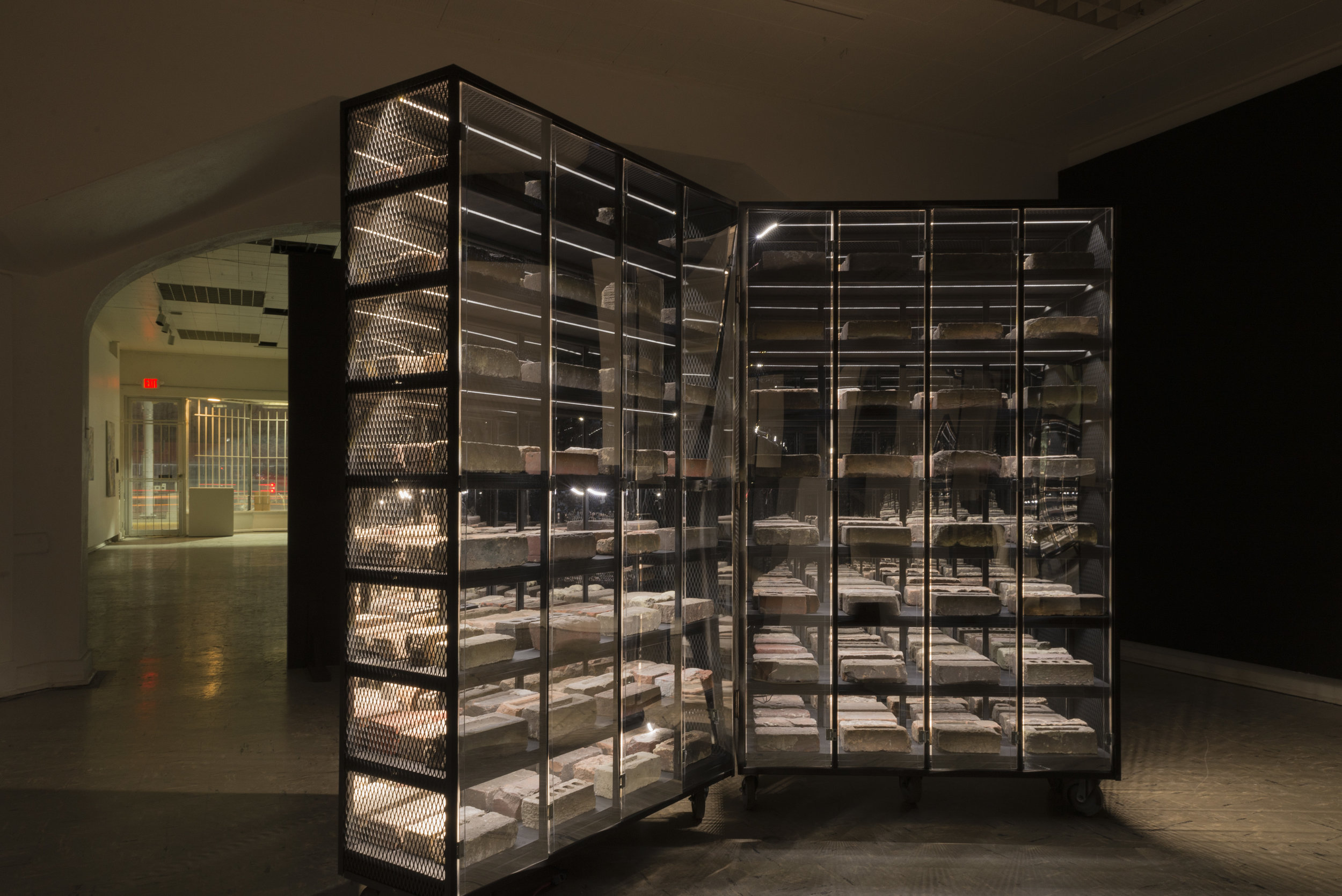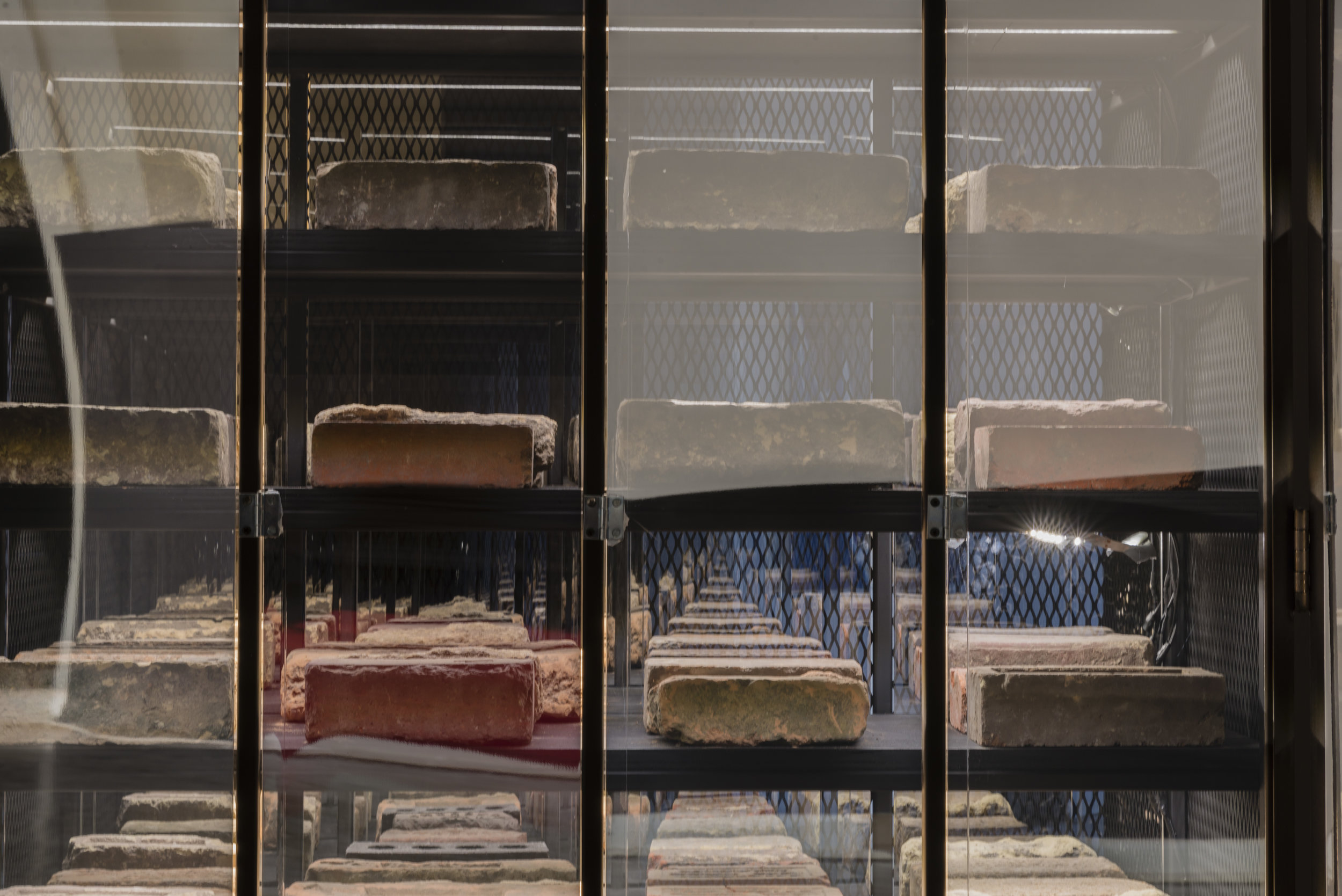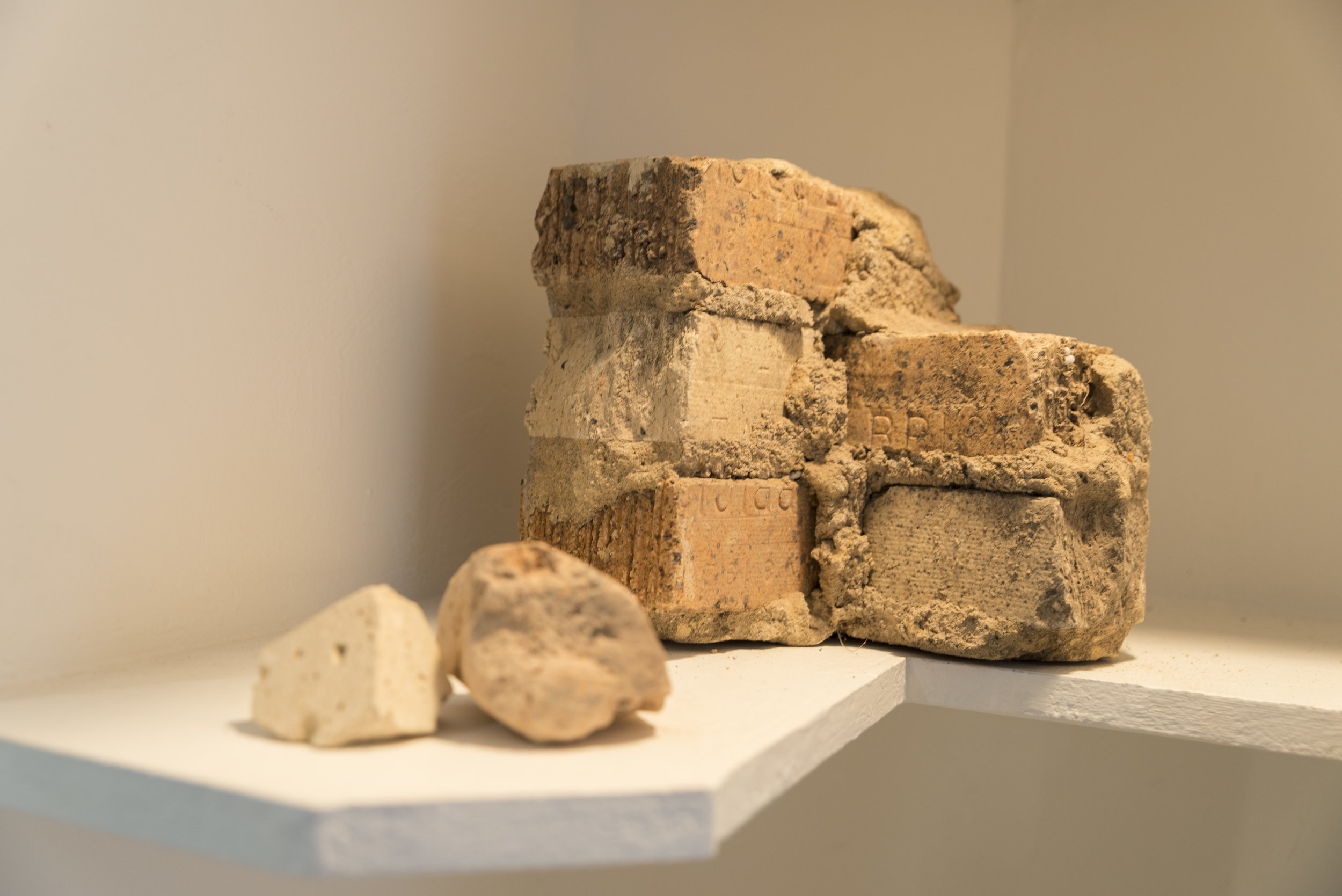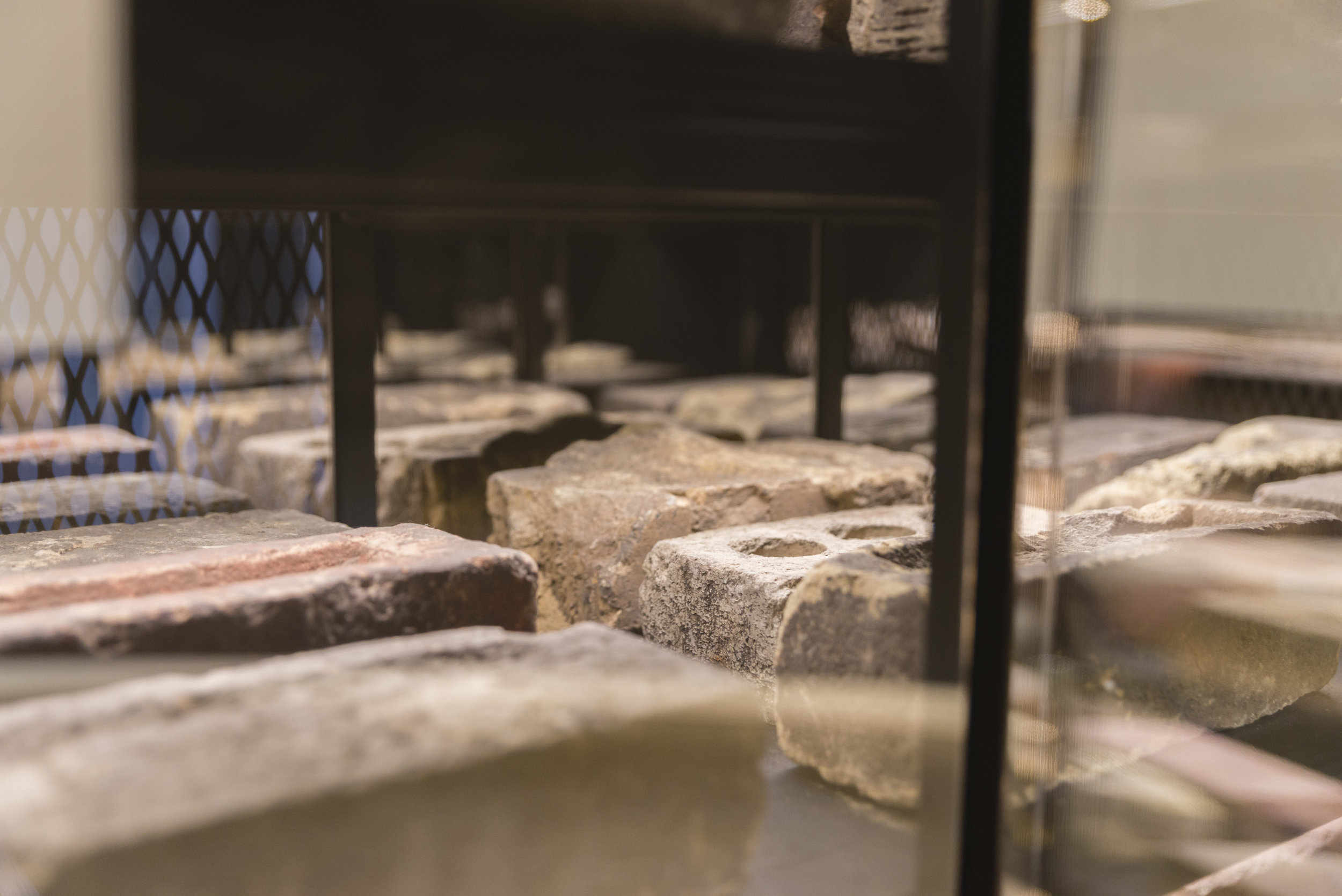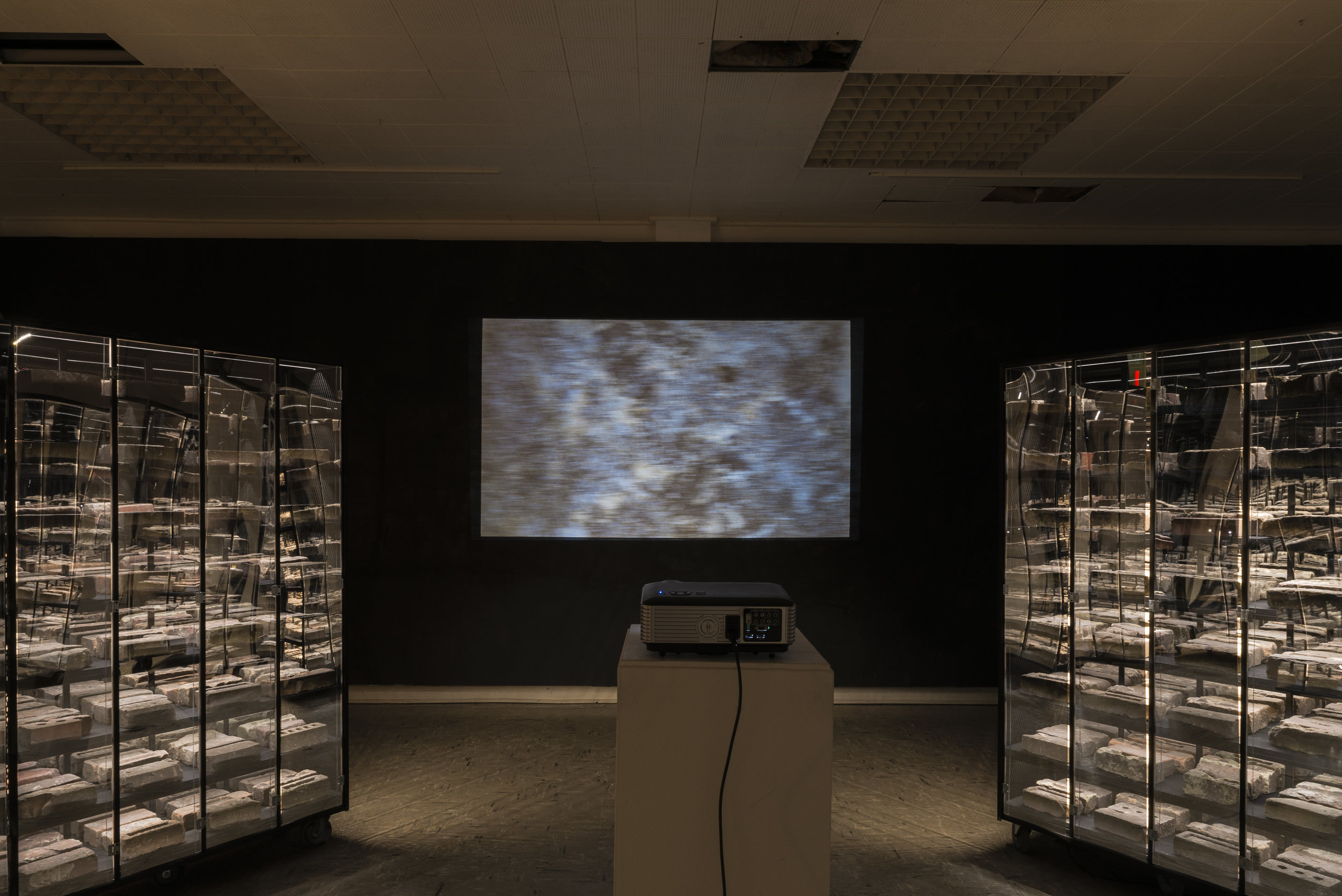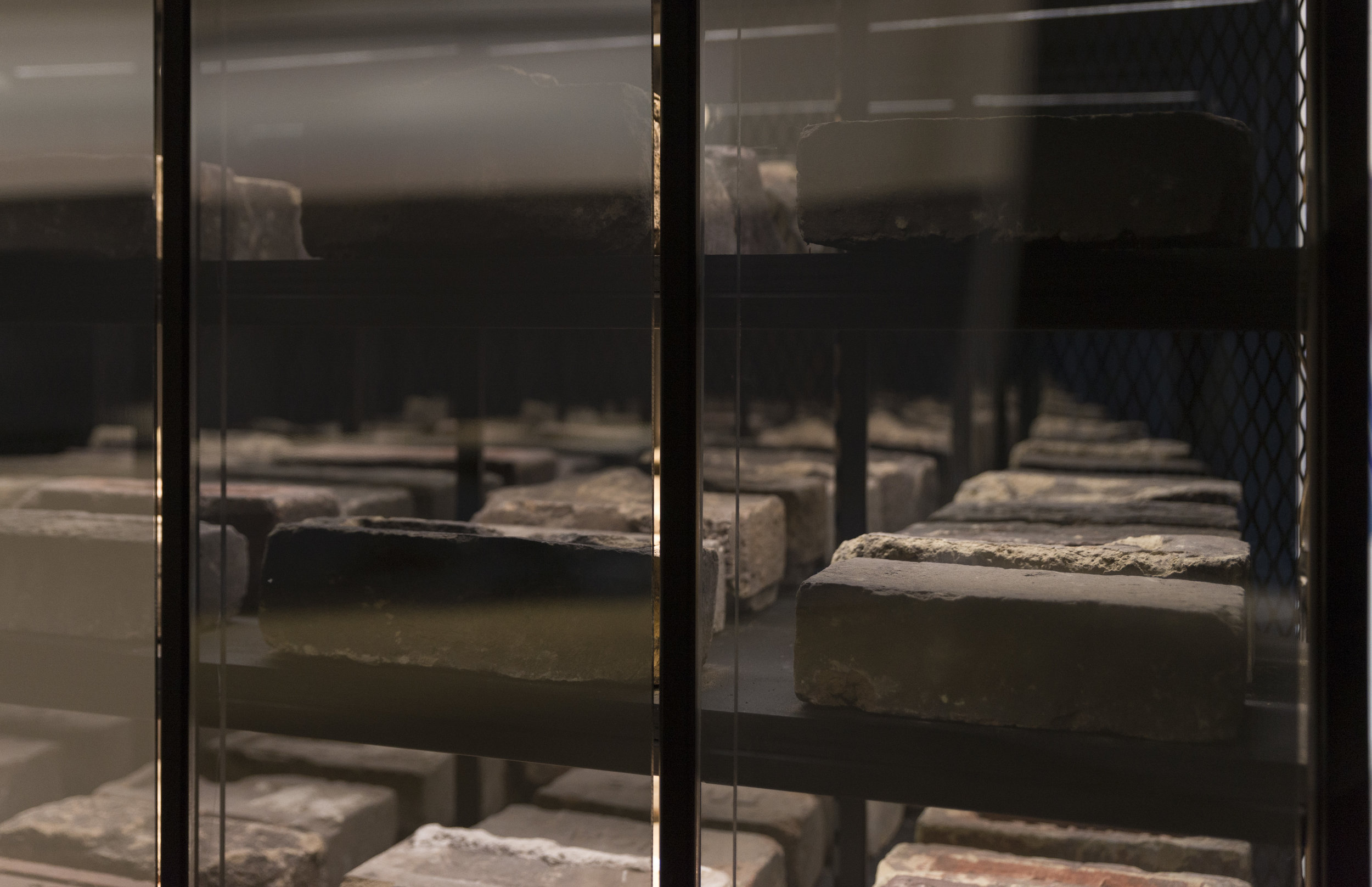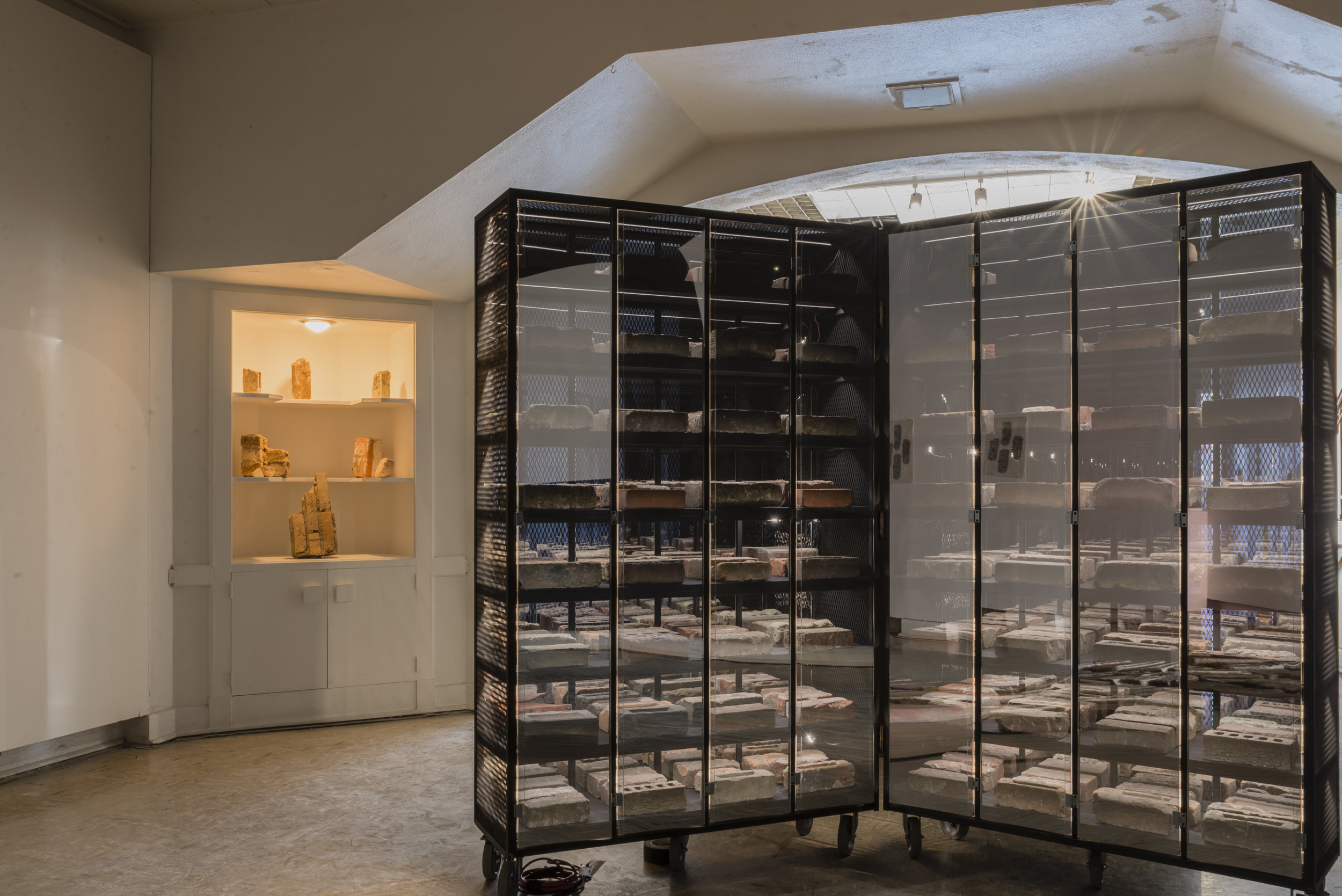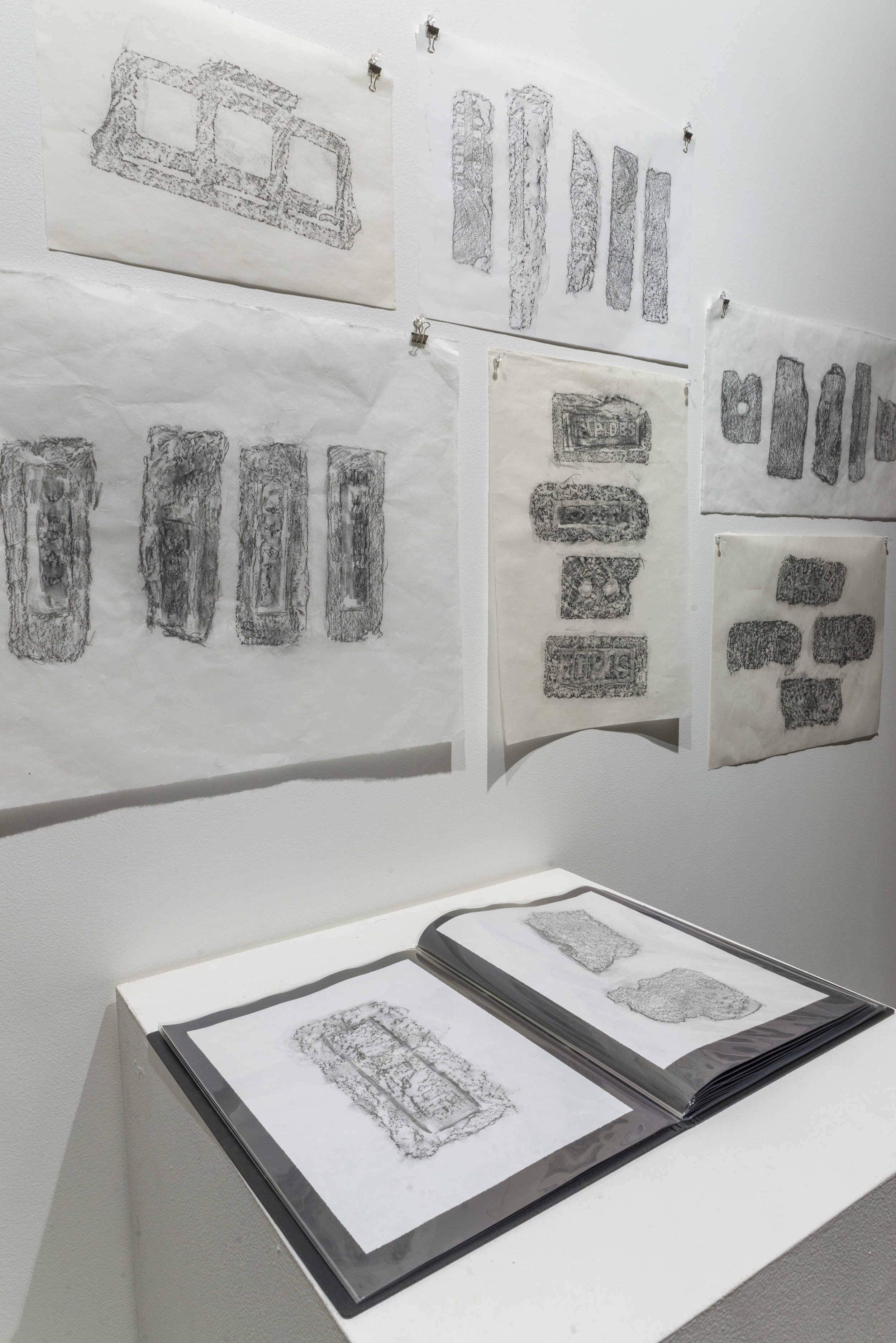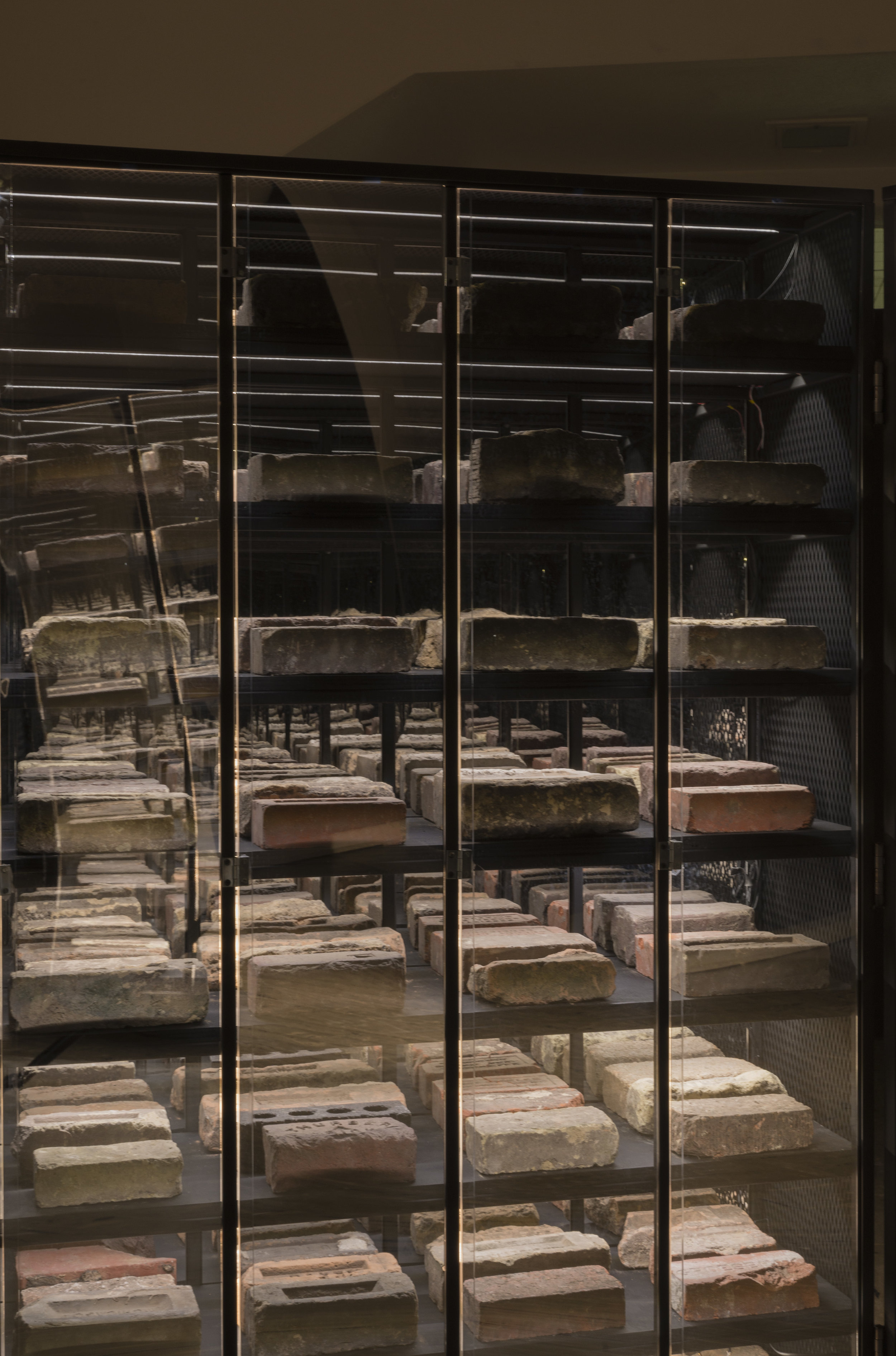VIDEO: 5 minute tour of the installation at the Julia Ideson Building (Houston Public Library) in 2024.
ABOUT THE HOUSTON BRICK ARCHIVE:
The Houston Brick Archive highlights a large collection of bricks salvaged from sites around Houston starting in 2016. The bricks are studied from various angles, their origins traced, and their qualities explored. They are treated as invaluable ruins, processed in a way that is scientific but also impulsive; walking a line between curiosity and fetishism. Part theater, part research project, the Archive combines sculpture, photography, and other documents focusing on the bricks’ physical qualities and histories; an investigative video reverts the bricks back into terrain, and visitors may make their own rubbings of selected bricks. The almost obsessive approach to the bricks creates an exaggerated sense of their significance, even romanticizes them. By tracing their origins and migrations to become part of Houston, the bricks can serve as a metaphor for change, migrations, and the diverse and dynamic fabric of the world.
Fabrication for this project was managed and executed by Bob Bacon (Bob Bacon Metal Art) and Nick Vaughan. The brick soundscape was composed by Edwin Terrell. The Houston Brick Archive was funded in part by the City of Houston through Houston Arts Alliance.
ON COLLECTING BRICKS:
While living in Boston in 2013, I began collecting old bricks and other chunks and "samples" of the environment, things that had been torn or dislodged from their intended place. After returning to Houston in the late summer of 2015, I began work on the Remnants / Visions project in Sharpstown, excavating and converting a 1959 ranch house into a quasi-archaeological museum. During this project, with the help of local art students, family members, and friends, we salvaged around 1,500 bricks from the backyard of the site. I was struck by the large quantity of the bricks that were from Mexico. The politics of 2016 unfairly targeted Central American immigrants; Donald Trump’s campaign and ensuing administration portrayed Hispanic immigrants as a threat to the United States, and pushed for a return to older Anglo-dominant norms. The Sharpstown development is many ways emblematic of the type of post-war space created by and for a white middle class. The Mexican bricks used in part of the construction of this home then, speak to the much longer and inextricable relationship between Mexico and Texas, as well as to the present-day reality of Sharpstown as a largely Hispanic and immigrant community of incredible diversity. I continued to accumulate bricks from various sites around the city. They are artifacts to me, each speaking a different history. The diversity of bricks in Houston alone is fascinating. They hail from all over Texas, from Oklahoma, Louisiana, Illinois, and from several clay pits in Reynosa, Mexico. For me, the movement of the actual Earth in the form of bricks across space and time to Houston, serves as an apt metaphor for migrations of people everywhere on the planet. Over the grand span of time borders do not exist and the landscape itself changes, rendering any notion of ownership or entitlement inevitably temporary. The crumbling bricks, returning slowly to dust and Earth, embody this idea.
BELOW: The Houston Brick Archive, view of installation at San Jacinto College in Pasadena, TX (January 28 - March 18 of 2020).
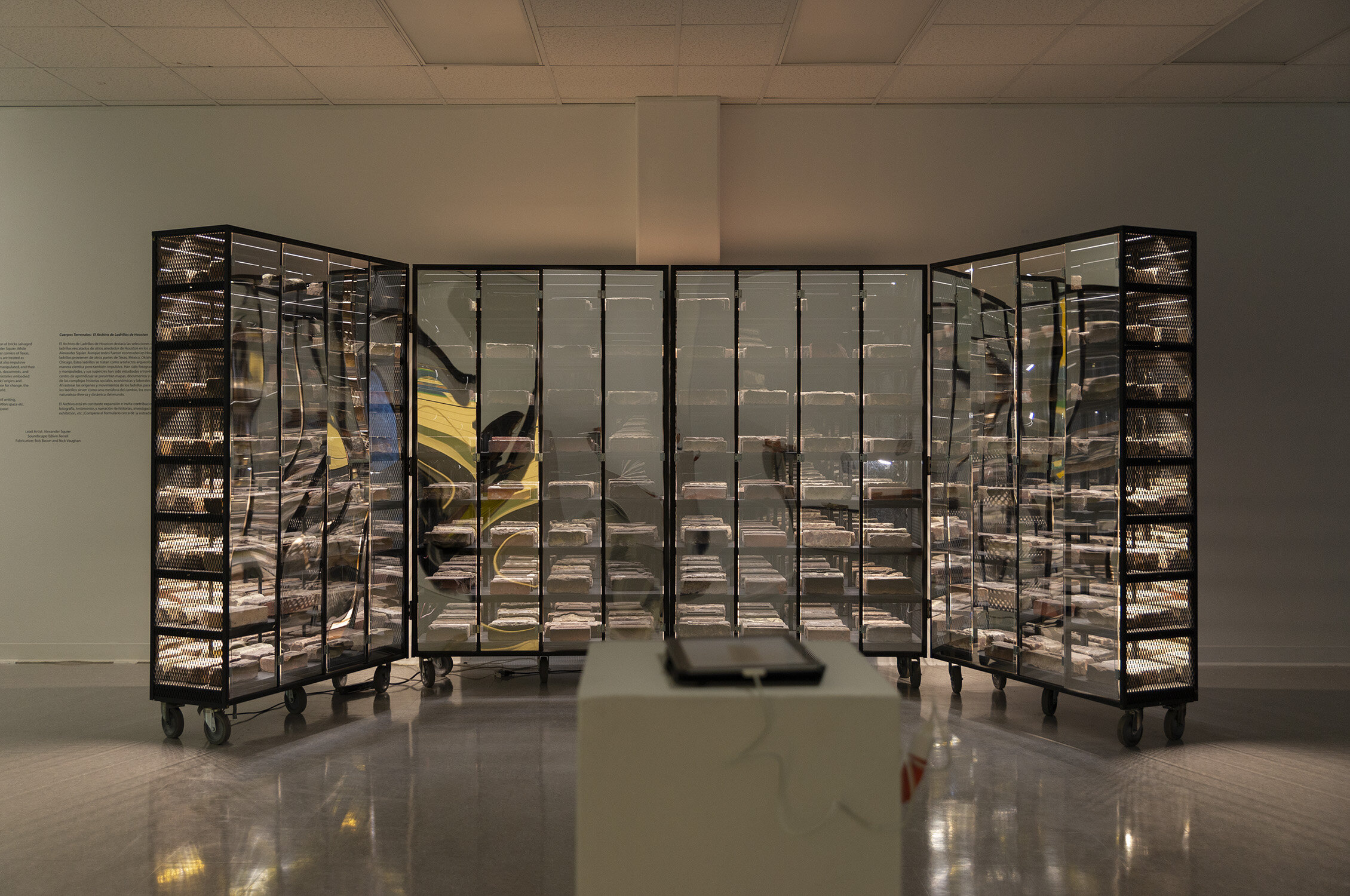
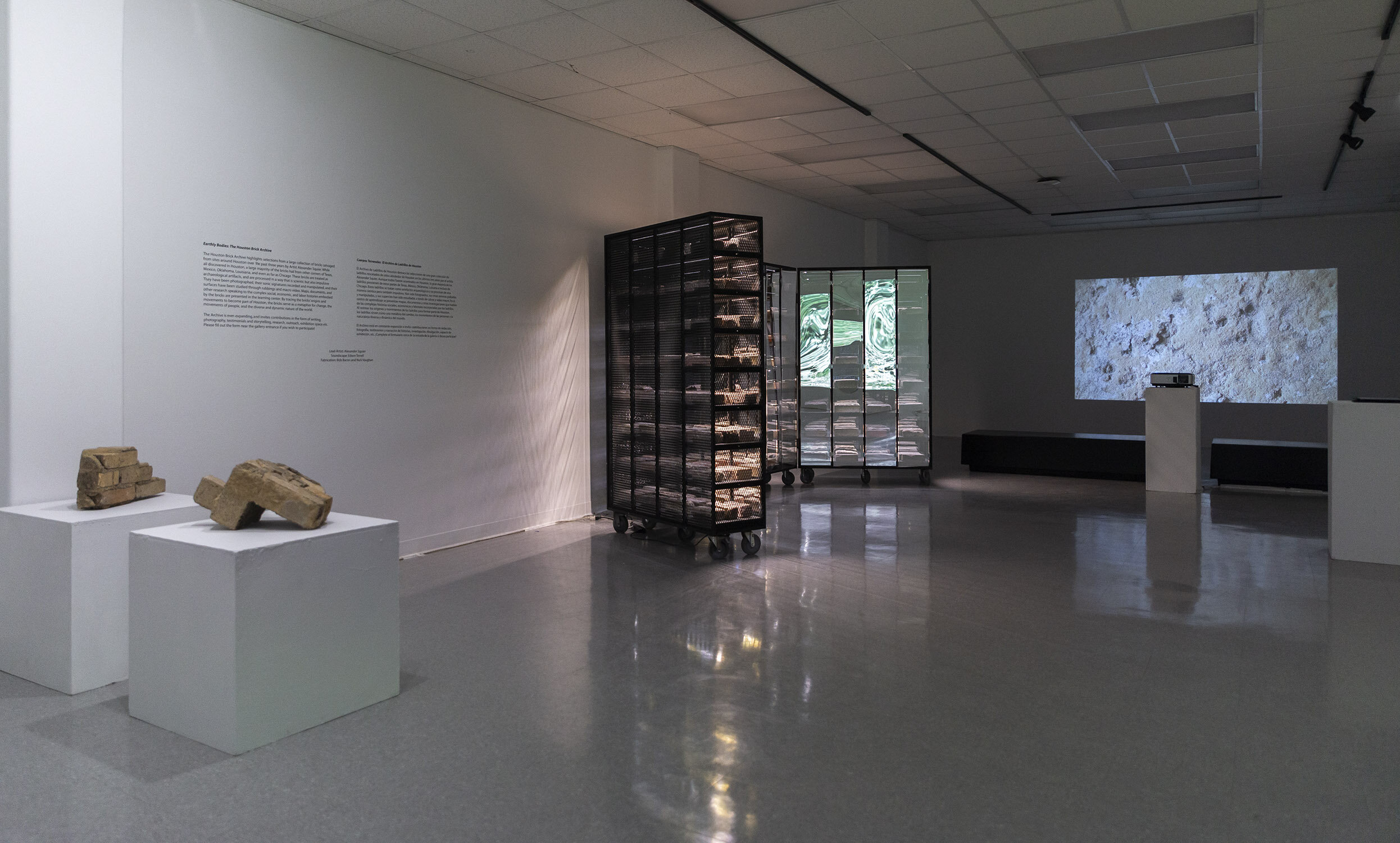

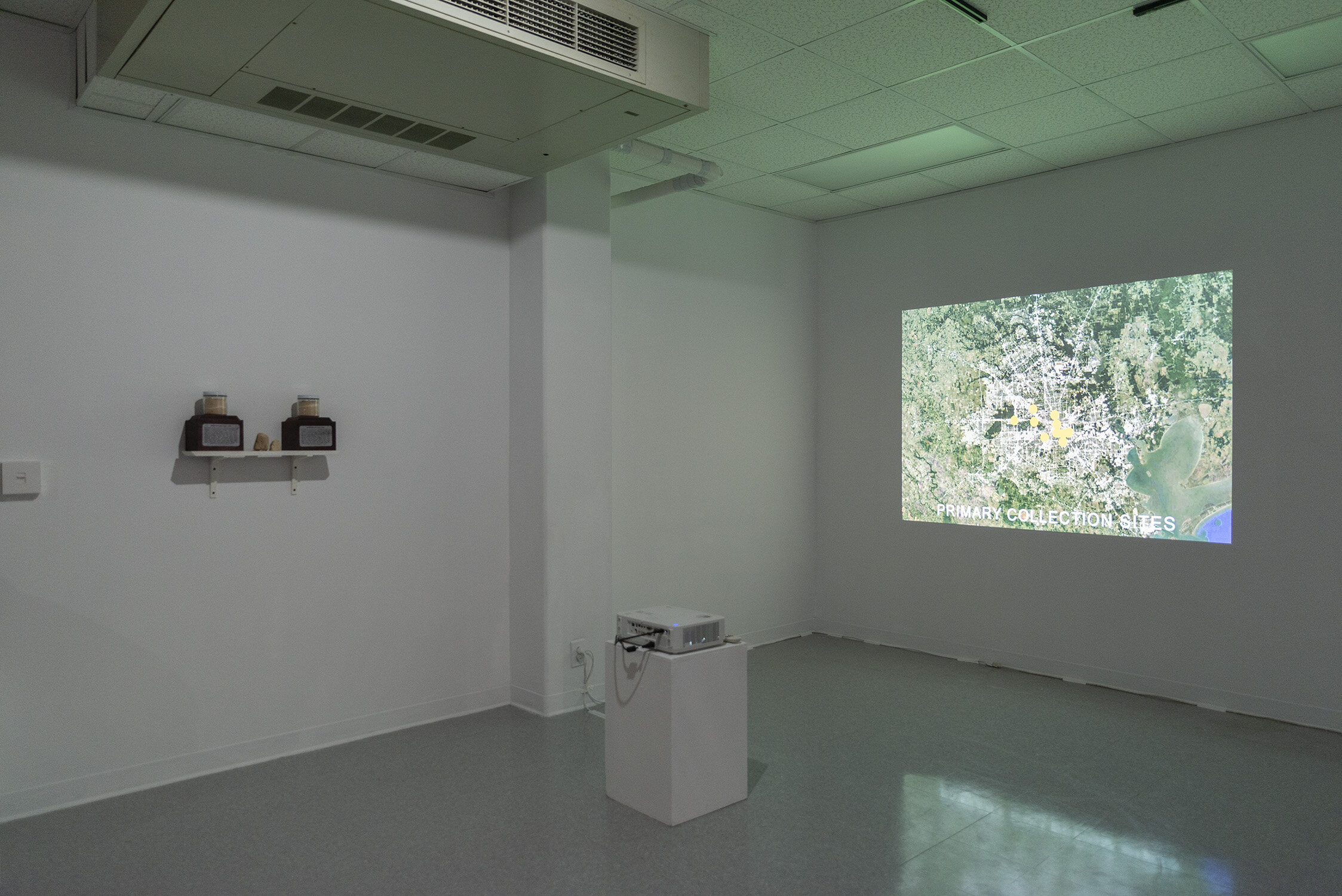
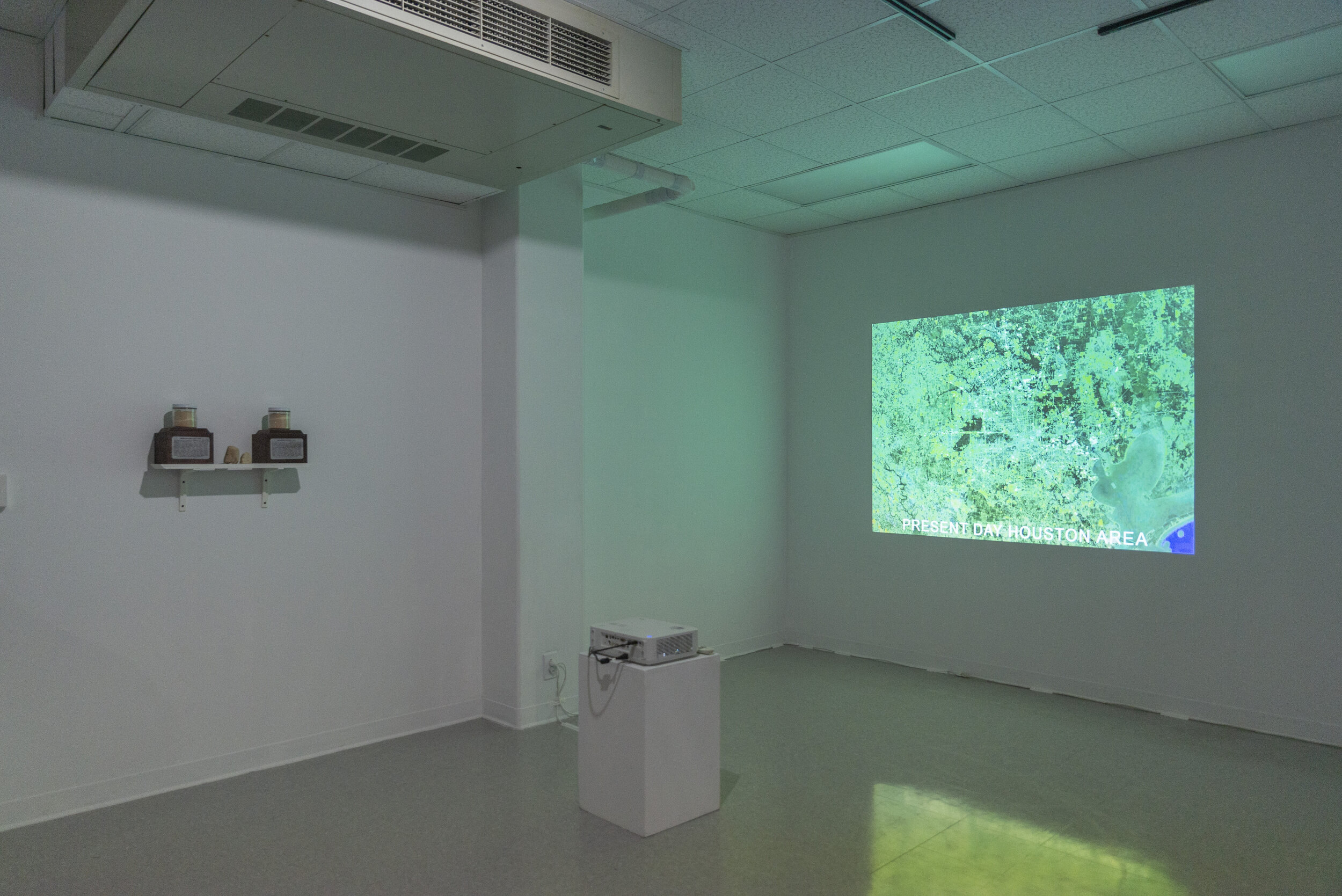
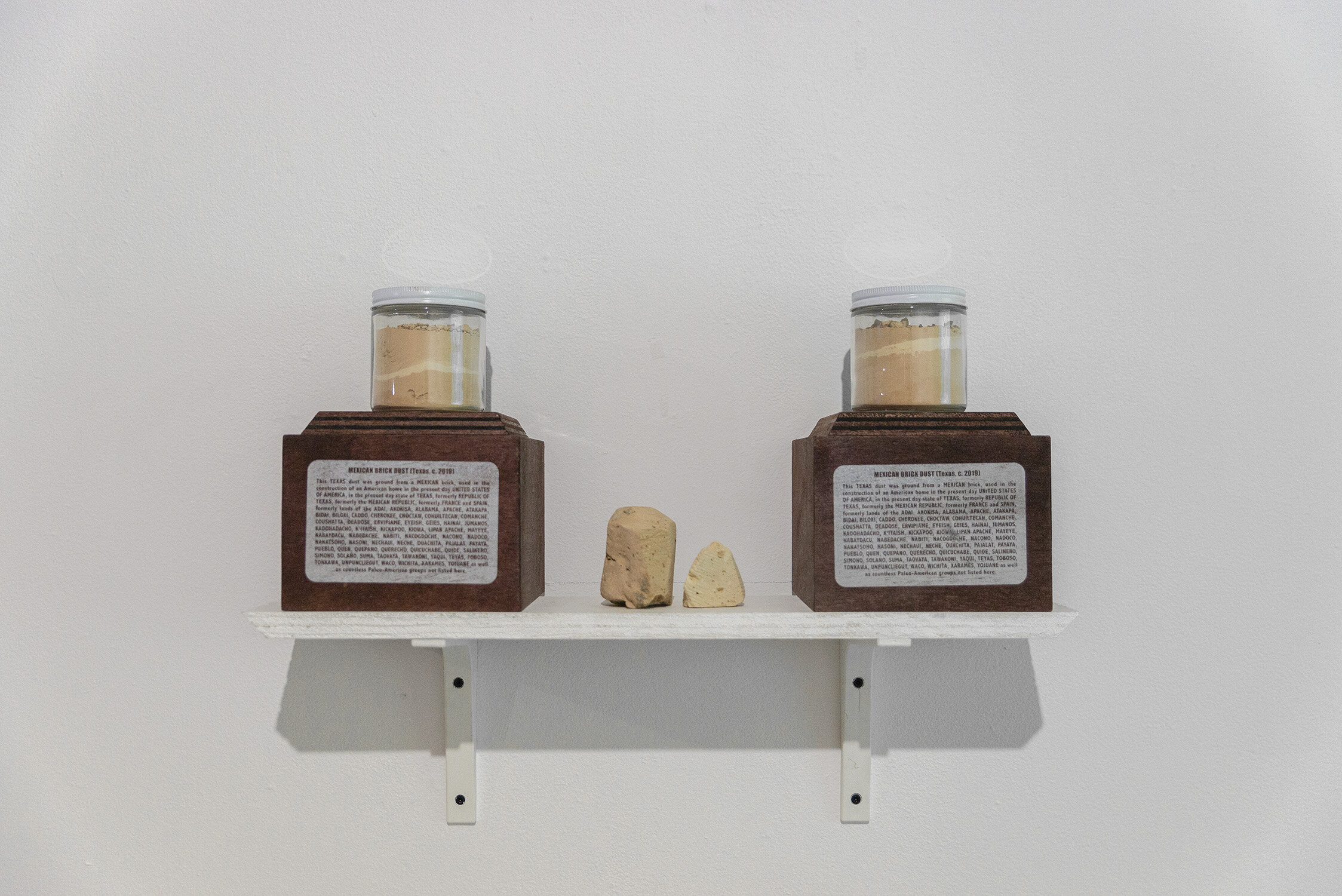

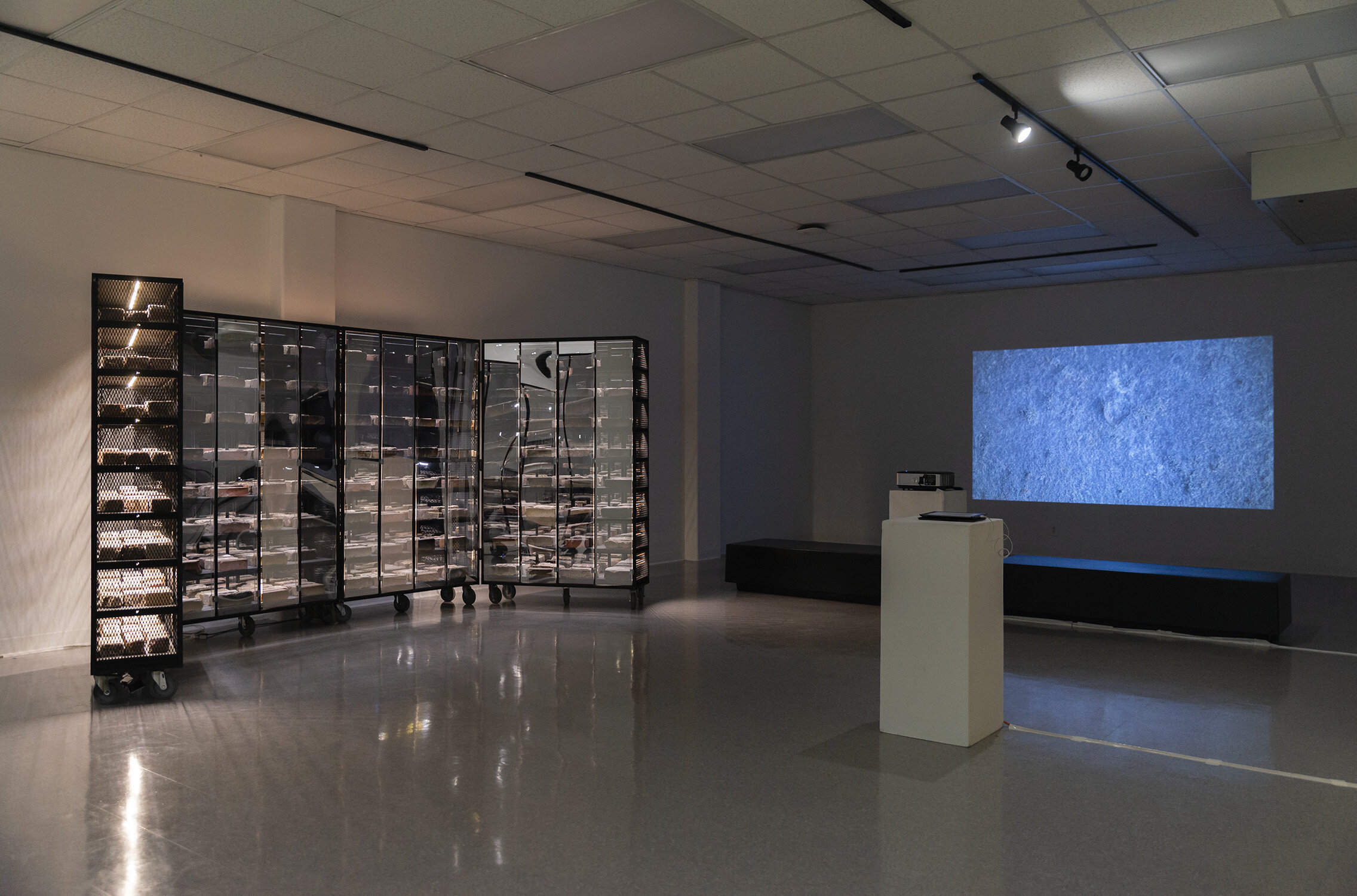
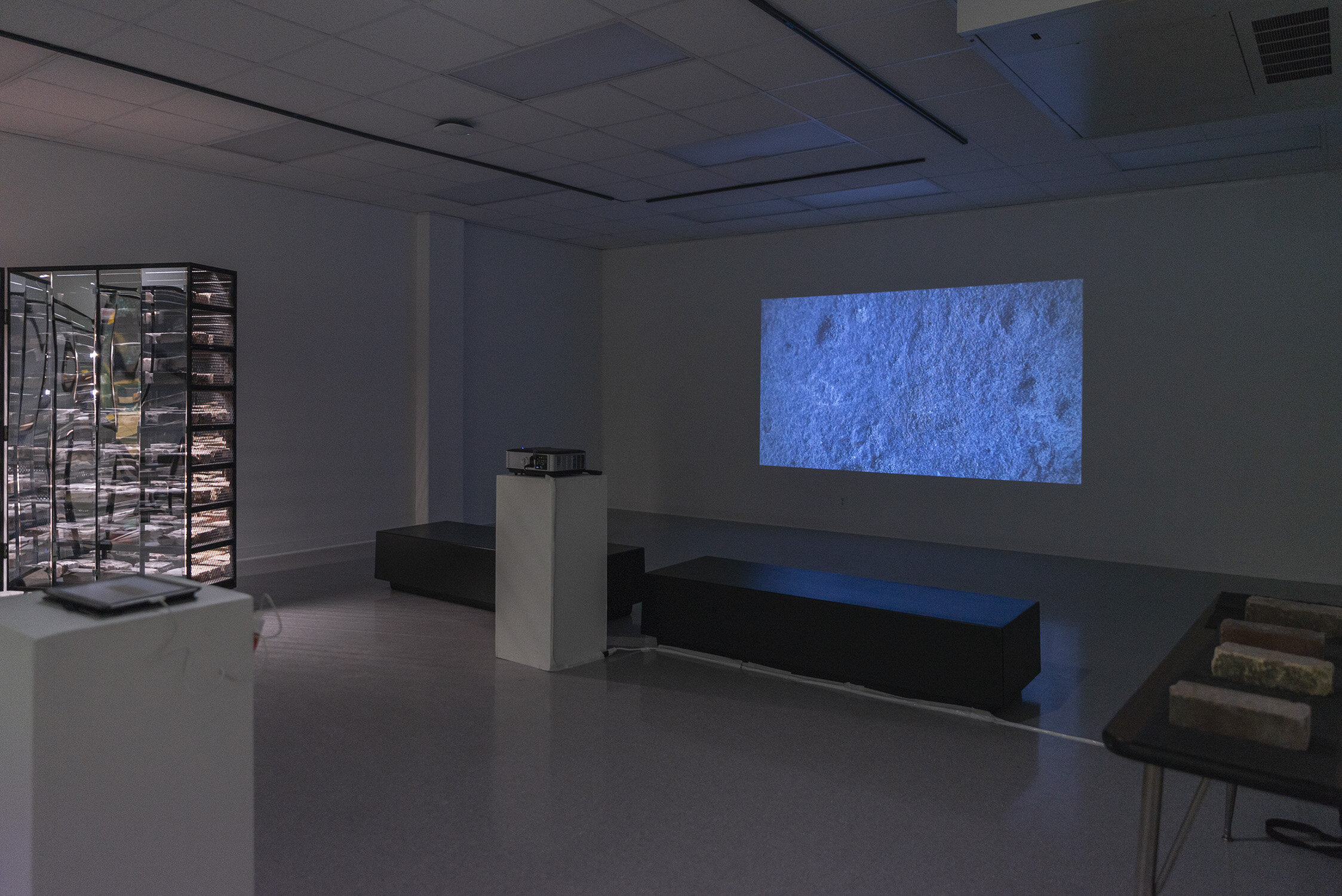
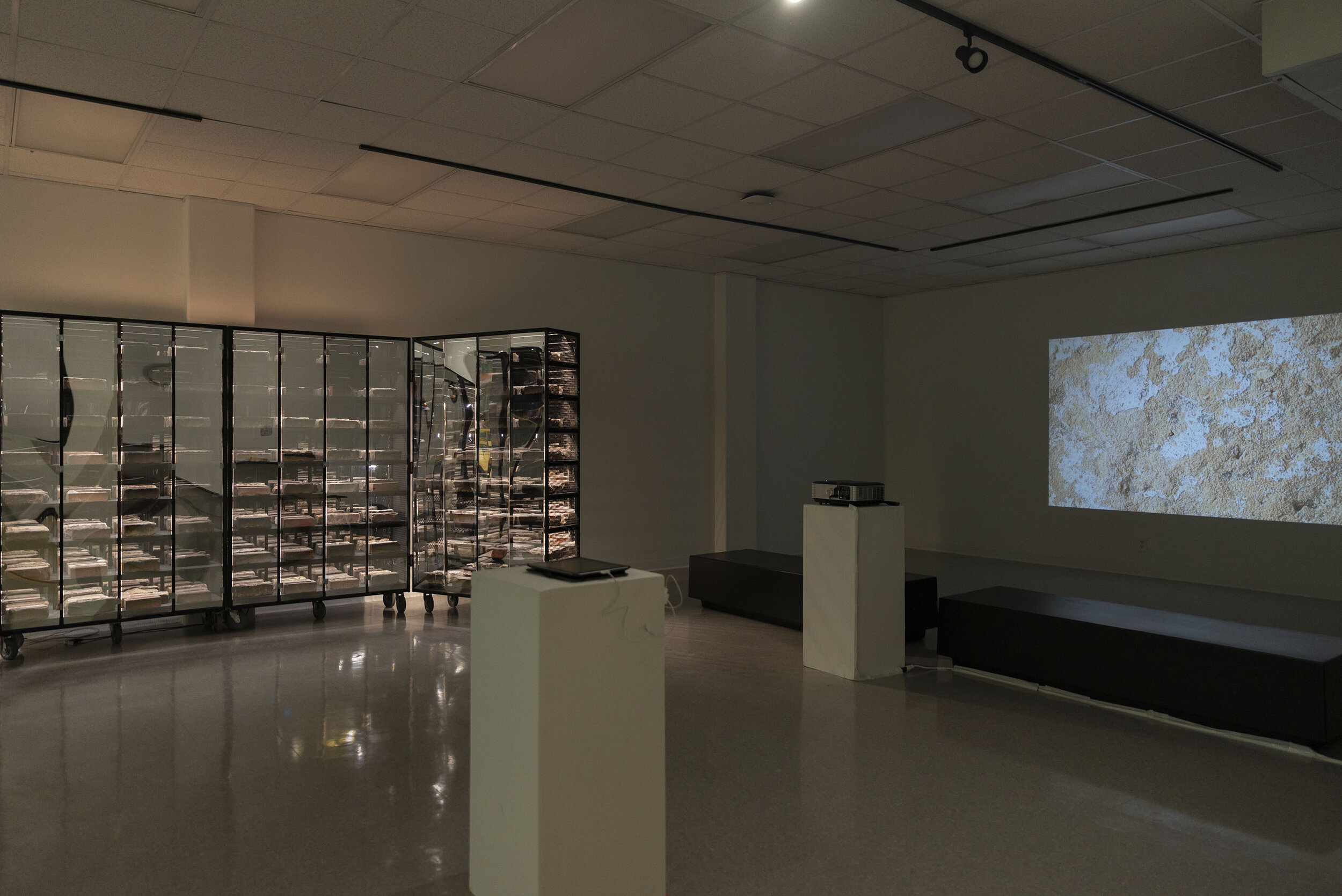
BELOW: The Houston Brick Archive, installed at BOX 13 ArtSpace in Houston, TX, 2018-19
